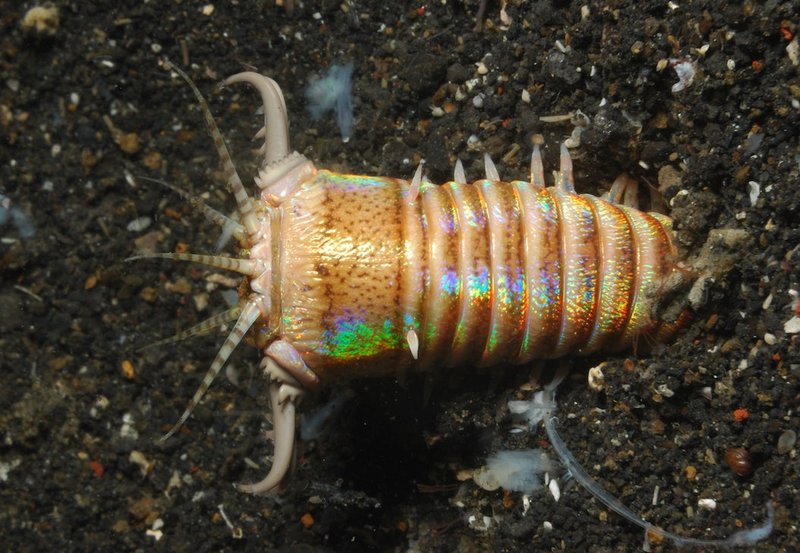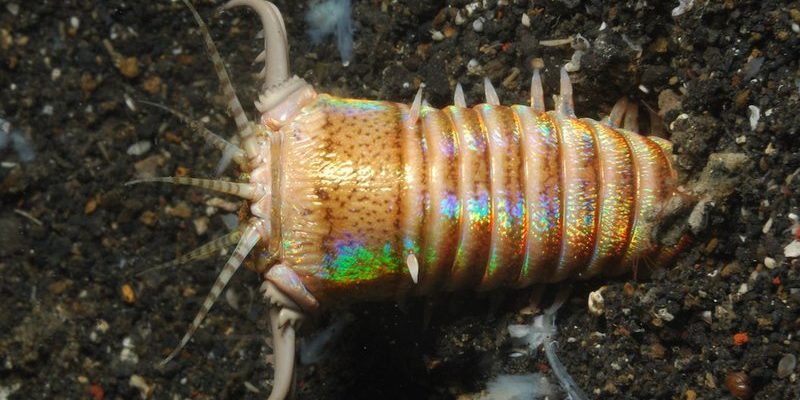
Imagine a creature that can extend itself like a snake, with a mouth full of sharp teeth ready to catch unsuspecting prey. That’s the Bobbit worm for you! It’s not just its appearance that gives it this terrifying nickname; it’s also its predatory behavior. Let’s dive deep into what makes Bobbit worms such fascinating and fearsome inhabitants of the ocean floor.
What Exactly Is a Bobbit Worm?
The Bobbit worm, scientifically known as *Eunice aphroditois*, is a marine annelid that can reach impressive lengths—some growing up to 10 feet long! These creatures are typically found in sandy or muddy substrates in warm, shallow waters across the globe.
You might be surprised to learn that they’re *not* worms in the traditional sense but rather segmented polychaete worms. They have a unique way of life, hiding in burrows with only their colorful, feathery tentacles peeking out. This behavior helps them blend in, allowing them to ambush prey when the opportunity arises.
Their vibrant colors—often bright greens, blues, or reds—might catch your eye, but don’t be fooled. Those hues serve a purpose, signaling that they belong to the realm of the ocean’s more dangerous creatures.
How Do Bobbit Worms Hunt?
Now, here’s where it gets interesting. Bobbit worms are stealthy hunters. They lie in wait, partially hidden in the sand, and extend their tentacles out. When a fish or crustacean swims too close, they strike with lightning speed.
Picture this: you’re swimming along, admiring the beauty of the reef, when suddenly, a tentacle darts out and snatches its meal. It’s like a horror movie scene played out in the depths of the ocean! Bobbit worms have strong jaws that can grab and pull in prey, making them one of the more fearsome predators on the reef.
When a Bobbit worm captures its dinner, it often wraps its body around the prey to prevent escape. The whole process is swift and efficient, showcasing the worm’s adaptability and skill in the underwater world.
Why Are Bobbit Worms Considered a Nightmare?
So, what makes them the “nightmare of the reef”? First off, their hunting tactics are ruthless. They don’t just nibble on their food; they are capable of inflicting serious damage with their powerful bites.
Imagine encountering one while snorkeling! Once you realize that the seemingly harmless sandy area is home to a creature capable of such fierce attacks, it’s enough to make anyone uneasy. The fact that they can remain hidden for long periods only adds to the suspense and fear surrounding these worms.
Plus, their vast size can be intimidating. Seeing a creature that’s a few feet long lurking in the depths is enough to give anyone a scare. Their sudden movement can catch you off guard, making them seem almost like a monster of the deep.
Interesting Facts About Bobbit Worms
Here are a few tidbits that might just blow your mind about Bobbit worms:
- Colorful Creatures: They come in a range of colors, and their bright hues can sometimes indicate their health and readiness to hunt.
- Regeneration: If a Bobbit worm loses a part of its body, it can regenerate! This ability is quite remarkable and allows them to survive in harsh conditions.
- Long Lifespan: These worms can live for several years, with some estimates suggesting they can survive for a decade or longer.
- Resilient Survivors: They can adapt to various environments, thriving in different types of substrates.
These facts make Bobbit worms not only terrifying but also quite fascinating!
Bobbit Worms vs. Other Reef Predators
You might wonder how Bobbit worms stack up against other predators of the reef. Fish, like the lionfish, are known for their venomous spines and hunting prowess. Sea turtles munch on jellyfish, while octopuses use their intelligence and camouflage to catch prey.
What sets Bobbit worms apart is their ambush style of hunting. Instead of actively pursuing their meals, they wait patiently for unsuspecting victims to swim into striking distance. This technique can be seen in other predators, like anglerfish, but the Bobbit worm’s unique dug-in position and speed make it particularly effective.
While lionfish use their spines for defense, Bobbit worms rely on stealth and surprise. It’s a different type of strategy that highlights the diversity of life in the ocean.
How Do Bobbit Worms Impact the Reef Ecosystem?
Bobbit worms play a significant role in maintaining the balance of their ecosystem. As predators, they help control the population of smaller fish and crustaceans. This balance is crucial for keeping the reef healthy, as overpopulation of any species can lead to issues like algae overgrowth.
Moreover, their burrowing behavior can influence the structure of the ocean floor. When they dig, they can create spaces that other small creatures may use for shelter or breeding. It’s a reminder that even the most feared predators have a role in the intricate web of marine life.
However, their presence can also indicate the health of the reef. A thriving Bobbit worm population often suggests that the ecosystem is balanced and vibrant.
Bobbit worms are indeed worthy of their title as the nightmare of the reef. Their striking appearance, stealthy hunting methods, and significant ecological role make them a fascinating topic in marine biology.
While they might send shivers down your spine, there’s so much to learn from these extraordinary creatures. Next time you think of the ocean, remember that even its most intimidating inhabitants play a crucial role in maintaining its beauty and balance. Embracing that mystery can transform fear into fascination, reminding us that the ocean is full of surprises—both delightful and terrifying!

